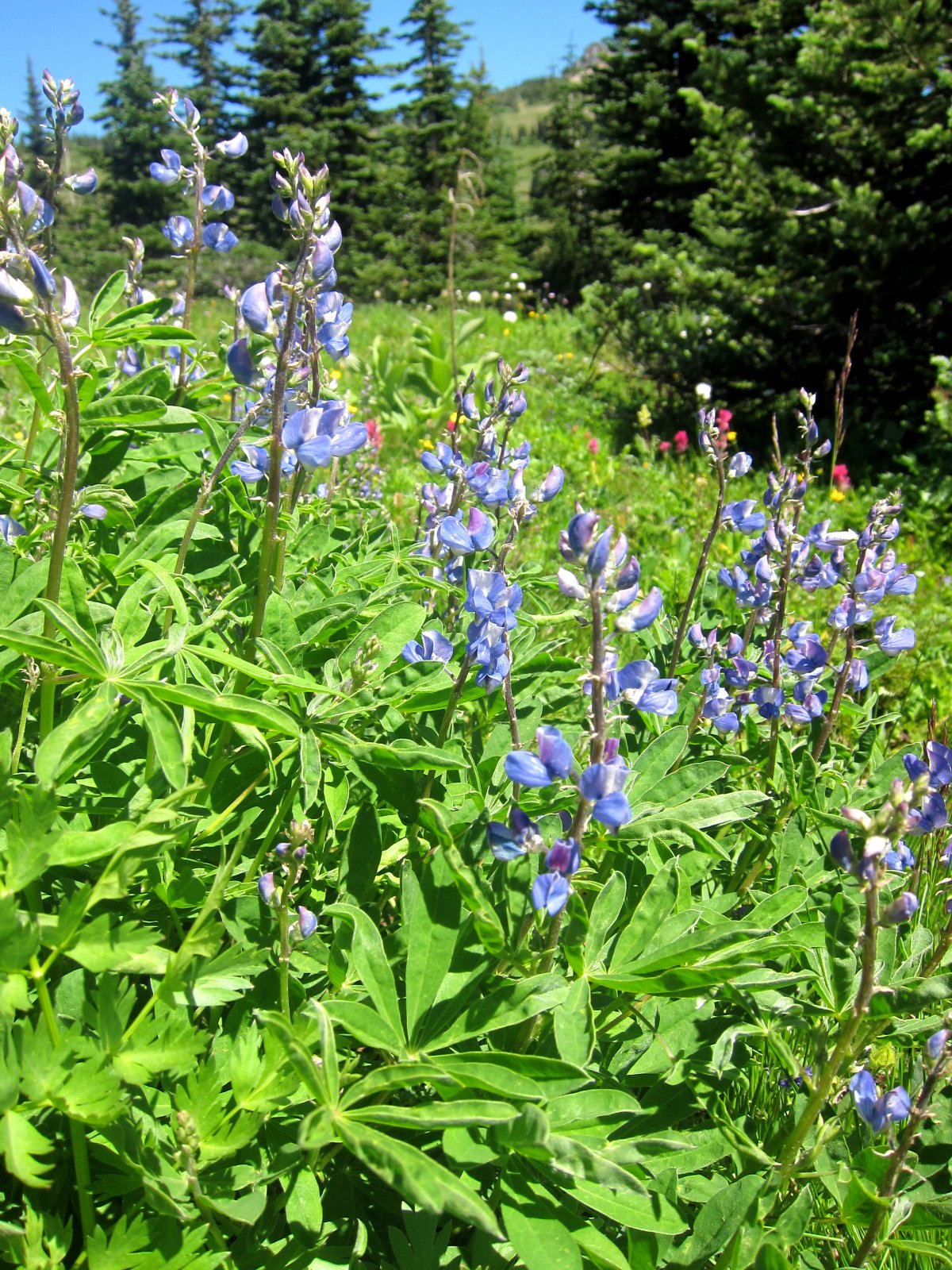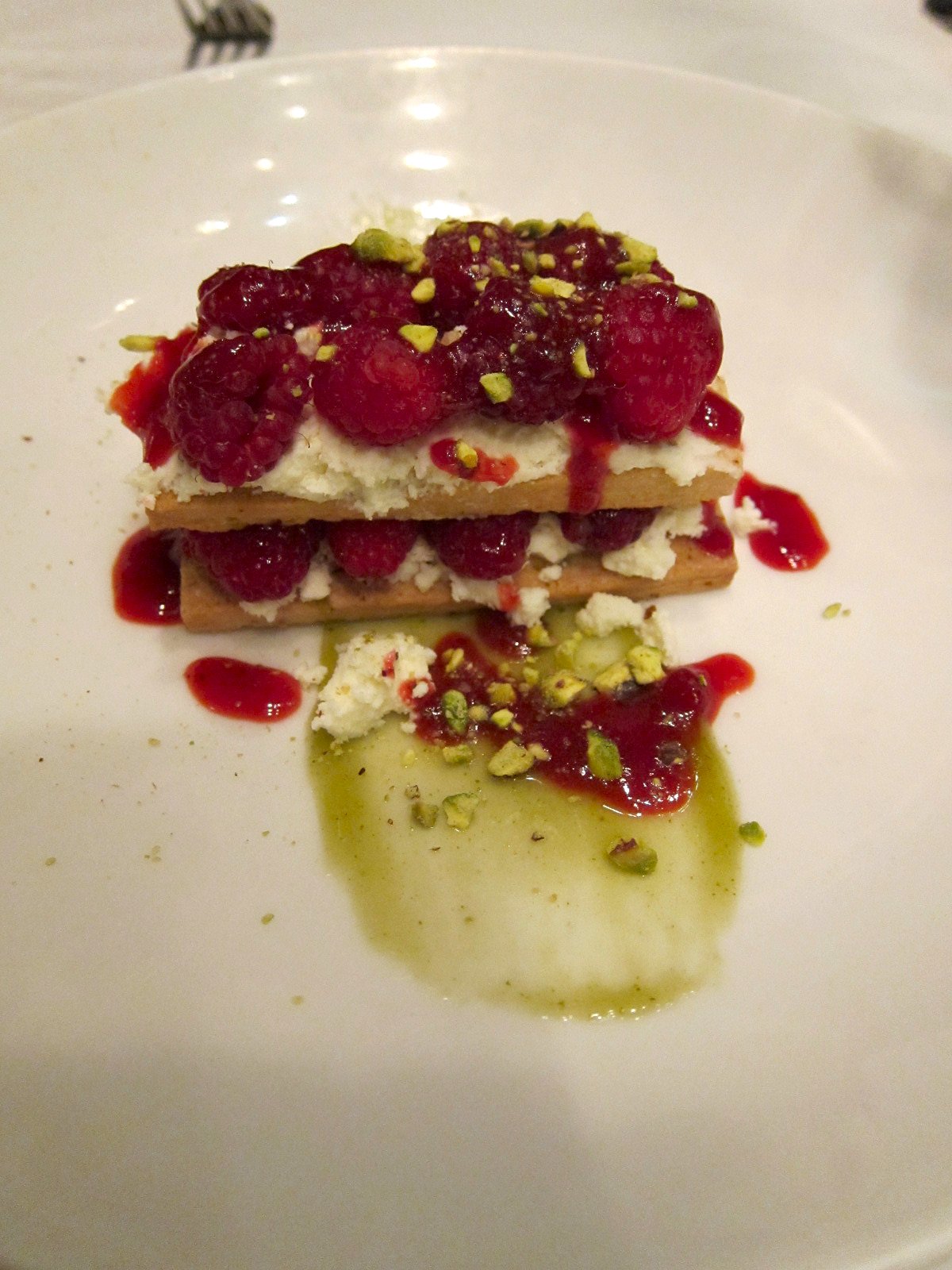A view from the slopes of Mount Rainier with snowy Mount Adams just visible on the horizon
Photo: Chronica Domus
Leaving the vibrancy of city life behind in Portland, we headed north in preparation for the next leg of our journey, one that would provide us with an altogether different experience.
Clearly, one is traveling through Washington state, make no mistake about that!
Photo: Chronica Domus
The above photograph shows how the state of Washington pays homage to its namesake president. It seems that every major highway sign I saw included a silhouette of our first president's likeness. Confusion as to which state one is driving through is immediately dashed with this unique visual cue. So very clever, I think. Actually, confusion could easily rain down upon motorists entering and exiting Portland, especially as the state lines of Oregon and Washington span the city's swarm of bridges.
Cows happily graze in the fertile meadows around Mount Rainier
Photo: Chronica Domus
What punctuates the surrounding pastoral landscape as one travels further north is an extraordinary series of mountain peaks that are covered in snow, even during the heat of summer. These peaks are so enormous, so dominant, so magnificent, that one cannot fail to have one's breath taken away upon first glimpse. Our destination was Mount Rainier, the highest peak in the Cascade mountain range, and considered to be one of the world's most dangerous volcanoes. It rises 14,411 feet at its summit, and holds no peer anywhere in the contiguous United States. Simply put, Mount Rainier is a giant.
We were to spend the day as guests of a local dendrologist and his wife, who had generously offered to give us a guided driven tour of Mount Rainier National Park. As we entered the park, we spotted the sign below. We were definitely entering the wildlands of the northwest.
Hungry bear alert
Photo: Chronica Domus
This young lady waved us through to begin our tour of one of the regions most pristine parks.
A friendly park ranger greets us at the entrance to the park
Photo: Chronica Domus
Mount Rainier National Park is the system's fifth oldest national park, and is home to not only picturesque sub-alpine meadows, crystalline blue lakes, rivers, and vast ancient forests, but it is also home to abundant wildlife.
This sparkling emerald green lake is so pristine that the trunks of submerged fallen trees are visible to the naked eye
Photo: Chronica Domus
Throughout our day of driving and hiking we gazed upon spectacular scenic tableaux. Our guide Thom, we discovered, was extremely knowledgeable and was able to provide background information on the many natural features we stopped to admire along the way. Thom is also an expert dendrologist so each time I had a question on what variety of tree this was, or what plant that was, Thom always had an answer for me.
Not only does the park provide a natural visual feast for its delighted visitors, it also boasts several buildings that were constructed by the National Park Service in a fashion that is sympathetic to its naturalistic surroundings. This architectural style, developed in the early twentieth century, is sometimes referred to as "Parkitecture", or National Park Rustic. The first example we saw on our visit was at a spot known as Sunrise, when we stopped for a short hike around the visitor center and day lodge.
The rustic-style shingled day lodge at Sunrise was built in 1931
Photo: Chronica Domus
Another example of "parkitecture" is the Sunrise Visitor Center which provides its visitors with telescopes for a better view of Mount Rainier
Photo: Chronica Domus
Sunrise is the highest point on the mountain that cars can access, rising to a lofty 6,400 feet above sea level. It is here that visitors gain the most complete view of the park and the extraordinary splendor that abounds.
A view of the glaciers on Mount Rainier (a blue glacier is visible cascading down the right side of the peak)
Photo: Chronica Domus
The area is also famed for its swathes of wild flowers which briefly appear during the short summer months when the snow has melted. We were fortunate to be visiting during the mountain's dazzling show and saw many unusual varieties, such as the example shown in the following photograph.
A fluffy anemone occidentalis which appears rather magical to me, and to my daughter was reminiscent of Dr. Suess' truffula tree, of Lorax fame
Photo: Chronica Domus
A colorful wild flower meadow of dwarf lupines and scarlet paintbrush
Photo: Chronica Domus
Continuing our tour around and down the mountain, we stopped at the Grove of The Patriarchs Loop for a brief respite in the form of a light picnic, and a leisurely amble around the looping trail. I was surprised to see how much the vegetation on this side of the mountain, and at this lower elevation, varied from the sub-alpine species thriving uphill. Here, surrounded by mighty ancient specimens of hemlock, Douglas fir, and western red cedar, one felt terribly insignificant. It was as though we had stepped into an otherworldly place. I was half expecting an encounter with a prehistoric beast where I would soon become his lunch. No, instead sprightly chipmunks frolicked along the forest floor, and the cacophonous din of Steller's jays swooping overhead was the only sound to break the silence.
This enormous towering mossy ancient red cedar has survived at least a thousand years
Photo: Chronica Domus
An example of a "nursery tree", a fallen tree that sprouts new life by growing vertical trunks
Photo: Chronica Domus
To view some of these trees, one must first take a little adventure across a small and somewhat treacherous suspension bridge that spans the clearest river I had ever set eyes upon, the Ohanapecosh. We performed our finest Indiana Jones impersonations as we negotiated the wobbly structure, one person at a time. Clearly, the three panic-stricken Japanese visitors we spied did not read the warning sign, which is written in English, and cautions against multiple people crossing simultaneously. Oops!
The Ohanapecosh suspension bridge which proved a challenging feat to keep stable
Photo: Chronica Domus
Concluding our drive around the park, we headed towards Paradise, affording us another opportunity to view the blue glaciers on Mount Rainier, and see yet another fine example of a National Park rustic structure, the historic Paradise Inn.
Paradise Inn was built to withstand the heaviest snowfalls in the park
Photo: Chronica Domus
A purple foxglove growing in a wild flower meadow in Paradise
Photo: Chronica Domus
Traveling through a stone tunnel, and passing several waterfalls, which are fed by melting glacial waters, we were soon to end a most enjoyable and memorable tour of this spectacular jewel in the National Park system's crown.
The stone bridge at Box Canyon
Photo: Chronica Domus
Melting water from Mount Rainier's glaciers create this waterfall
Photo: Chronica Domus
A bucolic final view of the majestic volcano
Photo: Chronica Domus
Of course, our experience was made more enjoyable thanks to our knowledgeable and generous host and expert guide Thom, and his delightful and gracious wife, and for that we are most indebted to them.
I do hope you've enjoyed reading about this area of outstanding natural beauty. In our fast-paced modern world, where more and more land is being turned over to developers, it is comforting to know that these unspoiled areas were conserved and set aside as parks for the enjoyment of future generations.














































